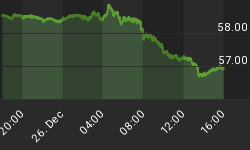The +38k jump to 407k in weekly jobless claims was the worst reading since Sept. 17, 2005 (week following Hurricane Katrina). The less volatile 4-week MA jumped 15.8K to 374.5K, highest since Oct. 2005. Continued claims rose to 2.937 mln, highest since July 17, 2004. The Labor Department did note seasonal difficulties arising from the Easter Holiday. The 400K handle may be revised down to the 390sKin the following week, but the climb remains consistent with recessions than the 360-70s seen earlier.
The report leaves little doubt to whether the US economy is in a recession, and supports our expectations for interest rates to reach 1.0% before year-end. 50 bps in April will take fed funds to 1.75% later this month, leaving 75 bps for the rest of the year is a highly plausible occurrence.
Today's report confirms what we said two weeks ago about markets' false sense of optimism/comfort arising from the lack of "systemic risk" news, ignoring the macroeconomic realities of the financial crisis which are here to stay and spreading.

Revisiting last week's strategy piece (Mar 25) about the S&P 500 inability to rise more than 3% above its 50-day moving average, the validity of this pattern may not augur well for the index. The chart below shows that since having reached its record high in October 2007, the S&P500 has had 34cases of failed rebounds. Today's jobless claims report is the fundamental catalyst for the S&P500's failure to regain the 1,380 resistance and find the 1,260 low.
We stated that in order for the index to break this pattern on the upside, it would have close above 1,380-5 level. On Tuesday, the high reached 1,377, still not good enough. The 1,382 level also marks a key trend line resistance, which acts as a pressure point since February 4. Once having failed to breach above 1,380-5, we expect to see a renewed pullback in the S&P500 towards the 1,300, before extending losses to the 1,257 lows.
Friday's payrolls report may act as a key catalyst, fuelling the possibility of breaching above the 1,380s in the event of a stronger than expected showing. A weak reading will intensify the selloff in equities in light of the recent failure in the index.
CURRENCY IMPLICATIONS: Considering the persistently strong correlation between risk appetite and the yen--with the currency used to purchase risk (equities, gold and oil) --renewed losses in stocks will refuel the yen and the Swiss franc after these two currencies have suffered from the recent bounce in stocks. The implications for USDJPY are illustrated in the chart below

USDJPY to Peak Out at 103.30s
Just as we write that that the USDJPY implications from the S&P's failure are negative, the US jobless claims deliver. Similarly, the implications for USDJPY in the event of this equity failure are for renewed losses towards 102.30, followed by 101.80. Upside remains capped at 102.80.
US Jobless Claims Saves Euro from Poor Data
EURUSD soars from $1.5520s to 1.5580s on the US jobless claims, which confirm that recession is here and interest rates will likely reach 1.0% before year-end. 50 bps in April will take fed funds to 1.75%, leaving 75 bps for the rest of the year is a highly plausible occurrence. EURUSD resistance stands at 1.56020, followed by 1.5650.
The jobless claims figure was alleviates the Euro from the previous selloff, which took place following weak services data. Eurozone retail sales fell 0.5% in February for an annual decline of 0.2%, following an increase of 0.5% and 0.2% m/m and y/y in the prior month. Markets had expected sales to rise by 0.2%. It was the biggest monthly rise in 3 months.
Eurozone services PMI fell to 51.6 in March from February's 52.3, nearly matching consensus forecasts of 51.7. The price index hit the highest in 9 months. Germany 's services PMI fell to 51.8, while Italy 's edged up to 48.8 from 47.2. France 's index slipped to 57.3 from February's 58.2, while Spain 's index tumbled to 40.9 from 46.1, the biggest decline of the series since it was created in 1999.
Poor US Data to Delay Worse for Sterling
Despite today's US weekly claims, we retain our broadly negative assessment for GBP, as we expect next week's anticipated BoE rate cut to open the door for 3 more rate cuts of 25-bp moves. Separately, UK services PMI hit a 6-momth low when it fell to 52.1 in March from 54.0 in February, undershooting expectations of a smaller decline to 53.3. The input prices index rose to a record high 66.2 from 65.6.
We expect interim upside to reach $1.9865-70, followed by $1.9920. Friday's payrolls may even call up 1.9990, at which point it will serve as a selling point for the pair ahead of BoE easing. Support climbs to 1.9760 and 1.9810.
















